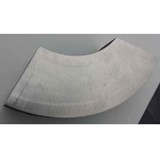In his case study, Detecting residual stress in duplex stainless steel applications, Raymond Cordewener, Eng., Consultant, writes about how duplex stainless steel is considered a perfect material and has many benefits as a main material of construction for applications in the industrial sectors. However, throughout the past several years, the required thickness of duplex stainless steel for application and product construction has grown substantially. This article focuses on how the growing thickness of duplex stainless steel products causes the residual stresses within duplex stainless steel to grow as well.
In extreme sections of the stresses can exceed tensile stress, which will lead to a crack. Just because a duplex stainless steel product does not show any signs of cracking, it does not mean that there are no existing residual stresses, Cordewener writes. In order to combat this problem, it is important to use simulation software to calculate residual stresses. The moment the residual stresses are close to, or exceed yield stress, a fugitive emissions leak can occur from the moment the product is loaded, to the stresses at a level close to yield-stresses.
For the full article, please email Catarina Muia at c.muia@kci-world.com for the article PDF.

